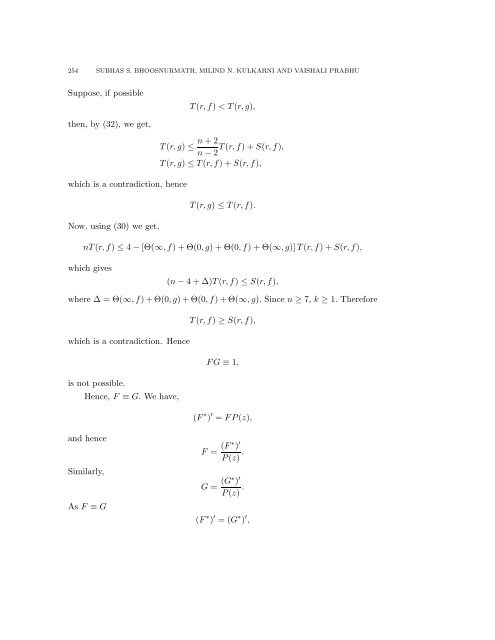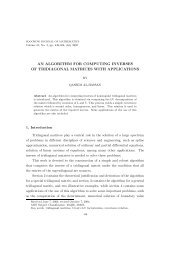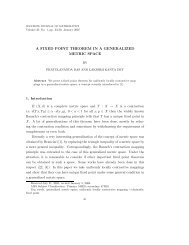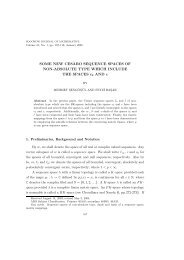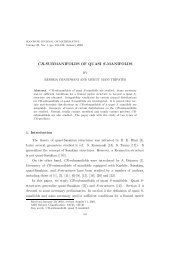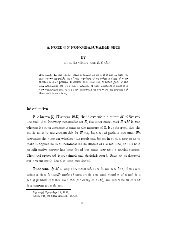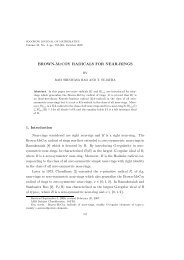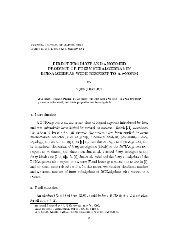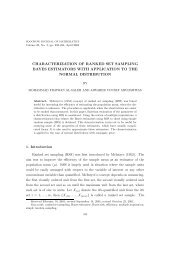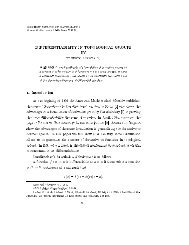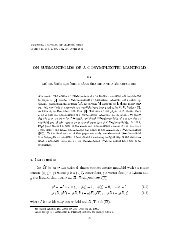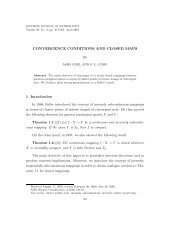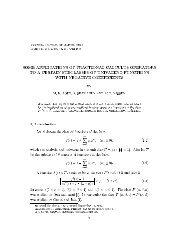uniqueness theorem for meromorphic functions concerning ...
uniqueness theorem for meromorphic functions concerning ...
uniqueness theorem for meromorphic functions concerning ...
Create successful ePaper yourself
Turn your PDF publications into a flip-book with our unique Google optimized e-Paper software.
254 SUBHAS S. BHOOSNURMATH, MILIND N. KULKARNI AND VAISHALI PRABHUSuppose, if possibleT(r,f) < T(r,g),then, by (32), we get,T(r,g) ≤ n + 2 T(r,f) + S(r,f),n − 2T(r,g) ≤ T(r,f) + S(r,f),which is a contradiction, henceT(r,g) ≤ T(r,f).Now, using (30) we get,nT(r,f) ≤ 4 − [Θ(∞,f) + Θ(0,g) + Θ(0,f) + Θ(∞,g)] T(r,f) + S(r,f),which gives(n − 4 + ∆)T(r,f) ≤ S(r,f),where ∆ = Θ(∞,f) + Θ(0,g) + Θ(0,f) + Θ(∞,g). Since n ≥ 7, k ≥ 1. There<strong>for</strong>eT(r,f) ≥ S(r,f),which is a contradiction. HenceFG ≡ 1,is not possible.Hence, F ≡ G. We have,(F ∗ ) ′ = FP(z),and henceSimilarly,As F ≡ GF = (F ∗ ) ′P(z) .G = (G∗ ) ′P(z) .(F ∗ ) ′ = (G ∗ ) ′ ,


